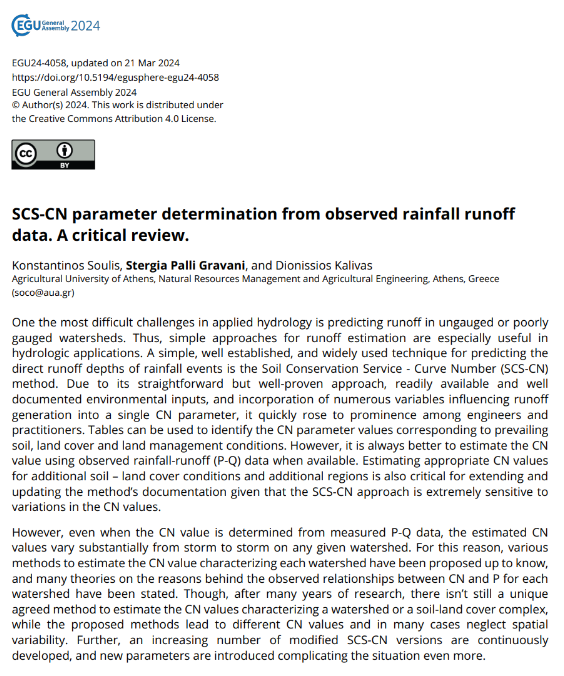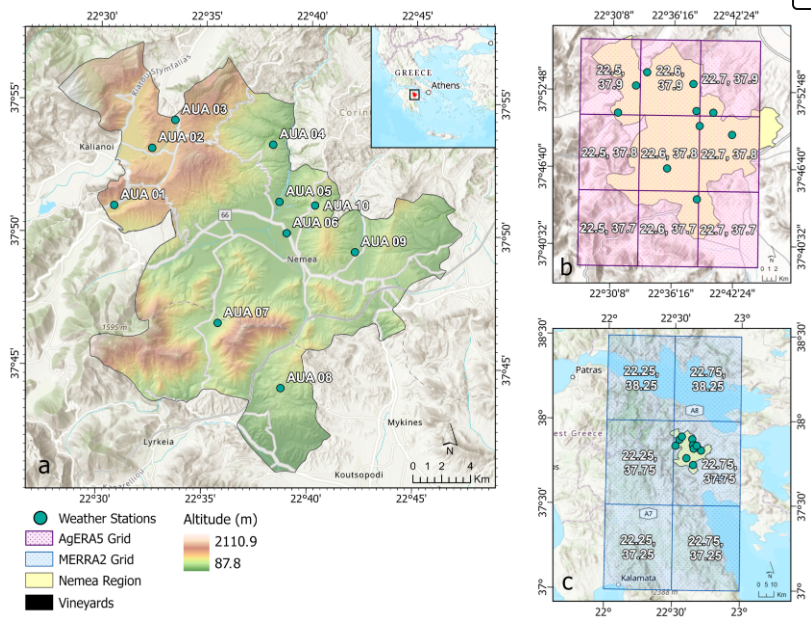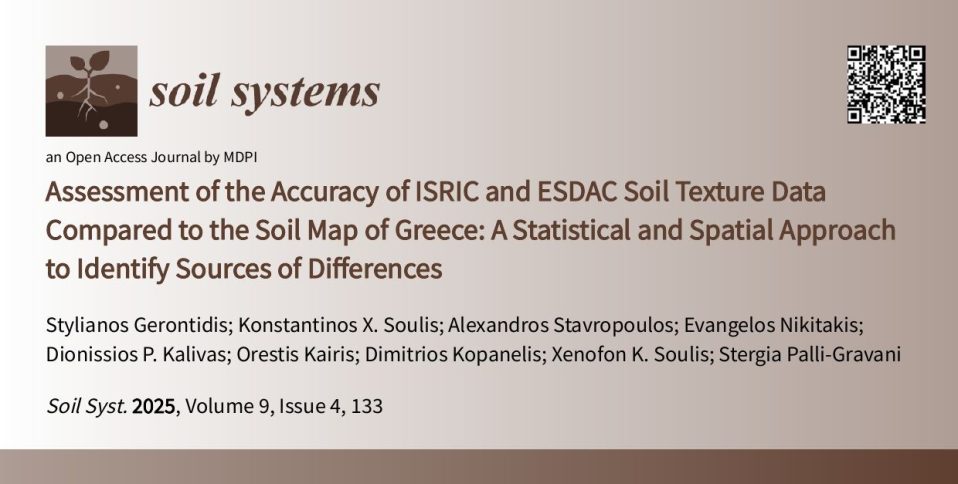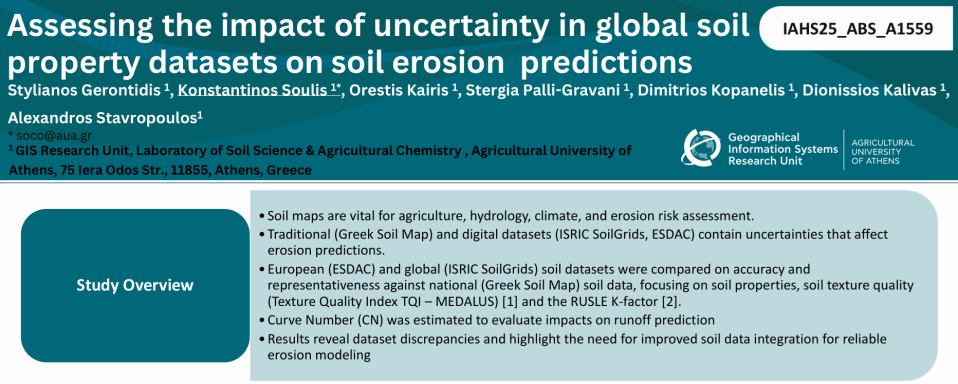SCS-CN parameter determination from observed rainfall runoff
data. A critical review.
Konstantinos Soulis, Stergia Palli Gravani, and Dionissios Kalivas
Agricultural University of Athens, Natural Resources Management and Agricultural Engineering, Athens, Greece
(soco@aua.gr)
One the most difficult challenges in applied hydrology is predicting runoff in ungauged or poorly
gauged watersheds. Thus, simple approaches for runoff estimation are especially useful in
hydrologic applications. A simple, well established, and widely used technique for predicting the
direct runoff depths of rainfall events is the Soil Conservation Service – Curve Number (SCS-CN)
method. Due to its straightforward but well-proven approach, readily available and well
documented environmental inputs, and incorporation of numerous variables influencing runoff
generation into a single CN parameter, it quickly rose to prominence among engineers and
practitioners. Tables can be used to identify the CN parameter values corresponding to prevailing
soil, land cover and land management conditions. However, it is always better to estimate the CN
value using observed rainfall-runoff (P-Q) data when available. Estimating appropriate CN values
for additional soil – land cover conditions and additional regions is also critical for extending and
updating the method’s documentation given that the SCS-CN approach is extremely sensitive to
variations in the CN values.
Presentation at the EGU 2024







Post a comment